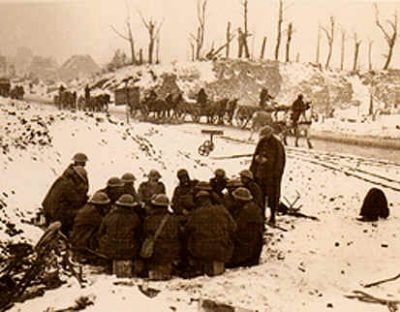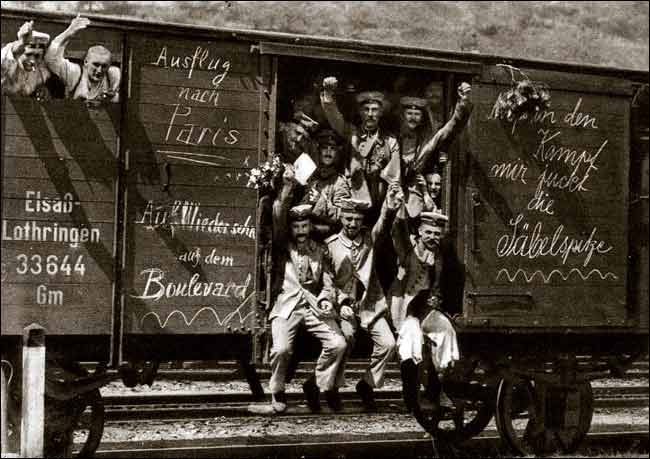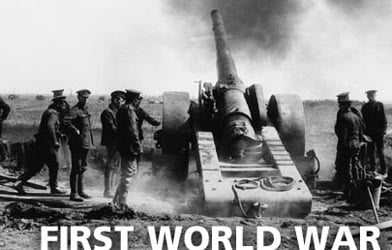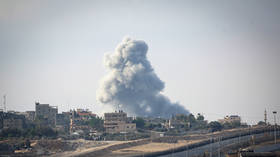The Continuing Dynamics of World War since 1914.

All Global Research articles can be read in 51 languages by activating the Translate Website button below the author’s name (only available in desktop version).
To receive Global Research’s Daily Newsletter (selected articles), click here.
Click the share button above to email/forward this article to your friends and colleagues. Follow us on Instagram and Twitter and subscribe to our Telegram Channel. Feel free to repost and share widely Global Research articles.
Global Research Wants to Hear From You!
***
Every day in the media, the question “When will the Third World War break out?” continues to be on the agenda.
Let’s answer this question from the beginning, the world war has been going on between oceanic powers and continental powers with varying intensities since 1914.
So what is “World War”?
This term emerged with the terms “First and Second World War”.
It was coined to describe large-scale conflicts around the world, involving many nations, including the hegemon and its rivals, and covering different continents, regions and countries.
The world of academia, media, politics and the military defined these multi-regional, multi-sided wars, which caused the hegemony to change hands or the existing hegemon to consolidate its power or the emergence of new great powers, as “world wars”.
However, while the wars were being waged or after them, many states did not call these wars world wars. For example, there were states that defined the First World War as the “Great War”. The Ottoman Empire called this war “Harbi Umumi”, that is, “General War”.
Similarly, while the Russians still define World War II as the “Great Patriotic War”, in China it is defined as the “War of Resistance against Japanese Aggression” or simply the “War of Resistance”.
Hitler also frequently referred to World War II as “war” or “struggle” in his speeches and propaganda.
Industrial Revolution and the Period of Great Wars
Wars that affected the world continentally rather than regionally emerged after the industrial revolution. Because the industrial revolution brought machine power instead of manual/natural power in production, triggering revolutions in the production of goods that have never been seen in human history. Its biggest reflection for great powers was the transition from the capitalist stage to the imperialist stage with the increase in trade, economic power and prosperity. This transition undoubtedly received its greatest driving force from military power. Military power developed greatly in a short time as a tool of punishment and imposition of the hegemon who controlled the growing financial and economic world, thus prepared the conditions for world wars. Today’s framework was drawn at the beginning of the 19th century.
Pax Britannica and the World War
In the 19th century, the biggest owner of both the industrial and the military revolution was Great Britain. Using its economic and military (naval) power, the small island state imposed the liberal capitalist and Sterling-based global system wordlwide, based on Protestant morality. In other words, the foundations of today were formed after the victories of the 1805 Trafalgar Naval Battle and the 1812 Waterloo Battle. The imperialist hegemony of Anglo-Saxonism began to be imposed on the whole world through the Royal Navy and army. Even the Ottoman Tanzimat reform and the Baltalimanı trade agreement were the results of this era. This system worked smoothly until the beginning of the 20th century, and the Anglo-Saxon empire ruthlessly continued its hegemony without setting the sun.
The Rise of Germany and World War I

German soldiers on the way to the front in 1914. A message on the freight car spells out “Trip to Paris”; early in the war, all sides expected the conflict to be a short one. (From the Public Domain)
Britain’s global reign continued for nearly 100 years, until the unification of Germany at the beginning of the 20th century and its subsequent leadership of the second industrial revolution. The balance began to be disrupted after the early 1900s.
Germany, as a late imperialist and colonial continental state and economic giant, wanted to benefit more from the resources of underdeveloped countries during the transition from coal to oil. Germany challenged England’s naval power through developing and deploying a huge navy to the oceans.
And the First World War broke out. The first, most brutal showdown between the sea and the continent lasted 4 years. Britain allied with another naval power -its archenemy of last 200 years – France, and its biggest rival -the continental state- Russia – and pushed Germany back to where it started at the end of the war.
The War Won Thanks to the USA
However, it owed this success to destiny. At the end of 1917, things were not going well and there was a communist revolution in Russia.
If there had been no revolution in Russia and the Russians had not withdrawn from the war with the extremely humiliating Treaty of Brest Litovsk, the USA would not have entered the war on the side of Britain to fill the gap, and perhaps Britain would not have won the war.
Thus, at the end of the war, Britain retained its place as the owner of the First Industrial Revolution and hegemony, but this victory was a Pirrhyc victory. Germany had become weak.
The USA was beginning to take Britain’s place. Power was slowly changing hands, but this change was between two Anglo-Saxons.
Losers and the Seeds of the New War
There were two big losers in the great power league of the First World War: Germany and Russia.
Both lost their empires and made large territorial concessions.
On the other hand, the United States could not be on the side of the winners, because although Britain had a large share in winning the war, it did not transfer post war gains to the United States from either the Middle East or Europe.
In 1918, Lenin made major territorial concessions in the Treaty of Brest-Litovsk to protect the revolution at home.
However, he still could not please the western world and was dragged into civil war. As a result, they achieved unity at the end of 1922 through bloody conflicts and established the Soviet Union. On the other hand, Germany’s humiliation period with the Treaty of Versailles brought out Hitler. Industrial giant Germany quickly recovered with its disciplined population and this time took action with its enormous military machine to expand its living space (Lebensraum).
Repeating Dynamics in Europe in 1939
The only thing that was different in the Second World War from the first was that the Soviets did not become enemies through the non-aggression agreement with Germany in the first two years of the war.
However, this was later disrupted, and the restructuring of the First World War was repeated.
The USA, Britain and the Soviets became allies.
Far from taking back what it lost in the first showdown, Germany occupied almost all of Europe.
As if that wasn’t enough, Germany attacked the Soviet Union in June 1941. Operation Barbarossa
This attack was inevitable despite the mutual non-aggression pact signed in 1939, because one of the eyes of the hegemon who emerged in Western Europe, just like Napoleon, is always directed towards the oceans and the other towards Asia.
It is a golden rule: What was lost in the first war is tried to be taken back in the second war.
The USA had the Wild West, England had India, Russia had the huge Central Asia, but Germany only had coal.
Hitler was aiming for a German Empire stretching from the Atlantic coast to the Ural Mountains. Hitler was so strong till the end of 1941, with the support of US corporations.
In a way, he took over the Imperial geopolitics from where the Kaiser left off in 1914.
In fact, his biggest goal was to gain access to both oil and valuable raw materials by taking over Russian lands.
After securing the oil and rubber stocks for domestic storages on which they were dependent, they achieved great victories in a toe years time frame with blitzkrieg warfare.
The first two years of the war went as planned. His aim was to persuade England to join him and attack the Soviets. Because Europe hated communists. Meanwhile, the world’s financial and trade giants were making big money from the war. Especially in the USA, the traces of the 1929 world economic crisis were being erased thanks to the war, and industrial production, was rapidly turning into war industry.
Pacific Front
On the other hand, another important factor that made this war a world war was Japan’s emergence as an island state, as a naval hegemon by challenging the USA in the Pacific. They aimed to dominate the Pacific Ocean with Indonesia’s oil, Indo-China’s rubber, and other valuable strategic resources. However, the Anglo-Saxon and Protestant USA, which has been the world’s largest economy since 1890, could not accept Britain’s example of establishing dominance by going from the island to the ocean and to the continent. A massive blockade and sanctions process was launched against Japan, and on the morning of December 7, 1941, Japan attacked the Hawaiian island and entered the war with the USA. This attack was a big surprise for Hitler. Because Hitler did not want the neutral USA to intervene in the great war across the ocean. Japan declared war on the USA without informing its ally Germany. Thus status quo fractured. Large US companies were already continuing to trade with Germany over the neutral countries throughout the war. The USA was even sending fuel to Germany via Spain. The neutral USA entering the war with Germany’s ally Japan would disrupt this flow.
Hitler’s Disappointment
Hitler’s situation was not bright at all during the days of the Pearl Harbor raid. The great Russian campaign (Operation Barbarossa) that he started on June 22, 1941, hit a hard rock in Moscow on December 5, 1941. The legend of the Blitzkrieg (Lightning War) ended that day.

Photograph taken from a Japanese plane during the torpedo attack on ships moored on both sides of Ford Island shortly after the beginning of the Pearl Harbor attack. (From the Public Domain)
A week later, Hitler made his second mistake, as important as his decision to go to Moscow, and declared war on the United States on December 11, 1941, hoping that Japan would declare war on the Soviets to force Russia into a two-front war.
However, if not declared, the USA would have fought only in the Pacific Front and maintained its neutrality on the European front. On the other hand, the Japanese did not declare war on the Soviets in response to Hitler’s gesture. While this decision brought the beginning of the end of Hitler, it also ensured the salvation of England. Because if the USA had not actually entered the war on the side of Britain, it would have taken much longer for Europe, Africa, and the Mediterranean basin to be freed from Hitler.
In the meantime, let us remind that the reason why the Soviets did not make a preemptive attack on Germany was for not to provoke Japan. In such a situation, they would have to fight on two fronts. The beginning of the end of Germany, which was stuck in the mud in the Russian steppes, began with the Stalingrad victory, which lasted 200 days and ended in February 1943. The Soviets counterattacked in the summer of 1943. They were moving so fast that the Soviet armies were stopped in Berlin by the US threat of nuclear weapons. In fact, the real military power that saved Europe from Hitler was the Soviets. One of the main reasons for the Normandy landing was to prevent the Soviets from reaching the Atlantic coast and dominating Europe.
Post-war Balance
As a result of the determination of the areas of influence that started in Yalta after the war, the two winning fronts of the war (Anglo-Saxons and Soviets) created a balance. (We can say that if Hitler had won the war, the same sphere of influence would have been shared between Germany and the Anglo-Saxon world.) On the other hand, the Soviets created a very wide security buffer area extending from the Baltic to the Adriatic Sea to avoid encountering a new Napoleon and Hitler again. With the geopolitical security belt where the first buffer is the Warsaw Pact and the second buffer is the Soviet Union, the founding Republic of the Soviets, Russia, has secured itself at the center.
The End of the Soviets
The external buffer called the Warsaw Pact lasted 36 years, and with the end of the Cold War, Russia first lost the Warsaw Pact and then the Soviet Union.
In other words, Russia encountered a new Brest Litovsk. It lost almost three-quarters of its domains within a year or two.
Just as Germany was humiliatingly provoked at the end of the First World War to prepare the environment for the Second War, this time, after the end of the Cold War, Russia was threatened with the continuous expansion of NATO to the East.
Furthermore it was faced with the NATO attempts to make Ukraine, one of the three main republics that founded the Soviet Union, a NATO ally.
Today Is Like Yesterday
Today, the US-led maritime hegemony is playing a geopolitical chess game like the situation in the early 1900s. In place of the UK, there are USA, UK, and the EU; In place of Germany, there are China and Russia.
Today, there is no change in Anglo-Saxonism’s objectives towards Russia.
According to them, Russia is too big and should be dismembered at all costs and removed from all seas.
Its unlimited resources should be in the hands of neoliberal capitalists.
Let’s remind again. The rising great powers in Europe always turn their attention to the east as soon as they become hegemons.
Napoleonic France and Hitler’s Germany are the best examples.
The rising power in Europe after the Cold War was the USA.
By using NATO through its leading proxies, England, France, Germany, Romania and Poland, NATO, which has constantly expanded after 1999, today has penetrated into Russia’s vital borders.
By provoking and inviting the Russia-Ukraine War, the USA and the EU enabled European NATO countries to fight Russia indirectly, if not directly.
If Hitler came back to the world today and saw the borders of NATO and the EU, he would undoubtedly not be surprised by this situation.
Russia Removed From the Sea
Today, Russia is not in the Adriatic. It is squeezed into a small area in the Baltic. It is surrounded by NATO countries in the North Sea. If it were not for the Montreux Convention, which restricts the entry of NATO warships in the Black Sea in war time, it has been brought to a situation where it cannot even breathe.
Despite being surrounded by NATO and being subjected to nearly a thousand economic sanctions and embargoes by the USA and the EU, Russia did not take any step back on the Ukrainian front; The fact that there was no change in the status of Donetsk, Kherson, Luhansk and Zaporizhzhia and Crimea, where the Russian-speaking population lives, frustrated the predictions that Russia would take a step back against Ukraine, which has received 200 billion USD worth of weapons, ammunition, mercenaries and aid from the West to date.
The leaders of the US, UK and France constantly say that Russia Must Not Win.
Russia is being demonized and made hostile in a way unprecedented in history.
However, this negative interaction backfires. During the Second World War, many western states breathed a sigh of relief when Hitler attacked the Soviets.
As a result, much of Hitler’s energy would be directed towards the east.
However, the Russian Expedition, which Hitler and his generals predicted would reach Leningrad, Moscow, and Kiev in 8 weeks at most, opened the doors of Berlin to the Russians with a devastating German defeat 2.5 years later.
Russians entered Berlin and did not leave Western Europe until 1989.
More importantly, in the 2.5 years between the winter of 1941 and 1943, their second biggest enemy, Japan, did not open a front against Russia in the east. Türkiye made the right decision by not entering the war on the side of Germany, nor did it enter the war on the side of the Anglo-Saxons. Today, in response to the anti-Russian US/EU and NATO front, China and India and the Global South do not even participate in fighting, let alone embargoes and sanctions against Russia.
The Main Target Is to Weaken China
For the collective west the most important objective is to defaeat Russia thus move it away from the China and to keep the Anglo-American dominance globally.
A weak Russia will not be able to spare any strength against the Anglo-American alliance in the Pacific power struggle with China.
To the contrary, in a worst case scenario, Russia’s imposition of its own political will in Europe, despite the US and the EU/NATO bloc, will damage the global patronage of the US, whose reputation and credibility have already been greatly damaged due to the Gaza War.
We are living in days in which the world economic balance is shifting towards Asia, and even the 300-year-old high-tech production monopoly of the West is being broken by Asian countries. BRICS+ 10 is rapidly moving towards becoming BRICS+ 40 in the autumn.
The Global South now distances itself from US leadership and arbitration in international issues. Although the US-China competition is currently concentrated in the fields of trade and technology, the days when the military competition will be carried to the actual field, especially through the Philippines and Taiwan, are near.
India will be the most important state in the alliance systems to be established during the military competition with China. If India remains neutral during the military conflict between China and the USA, the situation that will arise will be like Japan remaining neutral against the Soviets on the eastern front in World War II.
This will be the most important decision that will determine China’s future. Let us remind you once again that if the Soviets had clashed with Japan in the east while the German occupation was continuing, they would not have been able to wage a two-front war.
Though, Japan, South Korea, Singapore, Australia, and New Zealand acting together with the USA against China cannot guarantee a decisive victory. Because military, demographic, and economic conditions are in China’s favor today.
USA Will Try to Buy Time in the Pacific
In the light of these views, the USA will not initiate a military initiative in the Pacific that will cause a loss of reputation and trust for itself, unless India’s complete participation in to the Anglo-Saxon bloc is guaranteed and the US allies in the Pacific reach joint and combined operational capability under a NATO-like military command and control structure.
On the other hand, Ukraine, which still has its own dynamics, will use every means to continue the Russian war, as long as the its own people do not oppose it. In this way, both NATO states are kept on track and the American defense industry continues to transition to a war economy and massive production increase.
Using the security advantage that geography provides, the USA will increase its efforts to prevent the unification of powers on other continents and to prevent continental states from reaching to the high seas as naval powers in order to ensure the continuation of the Anglo-American geopolitics of the early 1900s.
In other words, the dynamics of the 1914 world war are valid today with different actors. World War continues. Only the scenes and actors vary.
The two biggest geopolitical shifts were the end of the cold war in 1989 and the capitalist economic system collapse in 2008. In very same year, 2008, Russia challenged the USA in Georgia/South Ossetia, where neocon imperialism peaked and won.
After 2012, with China entering the process of challenging the USA, the new era called great power competition has come to this day.
In popular language, World War III continues with hybrid methods. A new front to be opened in the Pacific or in Moldova/Transdinistra after the Russia-Ukraine and Gaza-Israeli wars will give a clue to where this process will evolve in the future.
However, under all circumstances, it is necessary to evaluate the situation that the US and EU/NATO fronts will encounter in the Asian Campaign with the surprises, Hitler encountered in the Moscow Campaign.
In all these processes, I assume that the use of nuclear weapons will only be made by governments and leaders who will approve the destruction of their own people. That’s why I consider it a remote possibility. However, the production of nuclear weapons will continue, especially for the American war industry, and therefore the threat will be kept on the agenda and the transfer of large resources will be ensured.
*
Note to readers: Please click the share button above. Follow us on Instagram and Twitter and subscribe to our Telegram Channel. Feel free to repost and share widely Global Research articles.
Ret Admiral Cem Gürdeniz, Writer, Geopolitical Expert, Theorist and creator of the Turkish Bluehomeland (Mavi Vatan) doctrine. He served as the Chief of Strategy Department and then the head of Plans and Policy Division in Turkish Naval Forces Headquarters. As his combat duties, he has served as the commander of Amphibious Ships Group and Mine Fleet between 2007 and 2009. He retired in 2012. He established Hamit Naci Blue Homeland Foundation in 2021. He has published numerous books on geopolitics, maritime strategy, maritime history and maritime culture. He is also a honorary member of ATASAM.
Featured image is from History Learning Site



